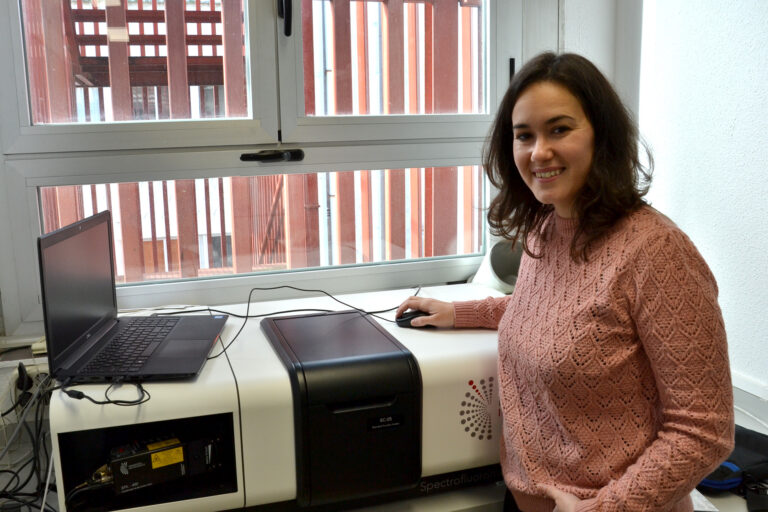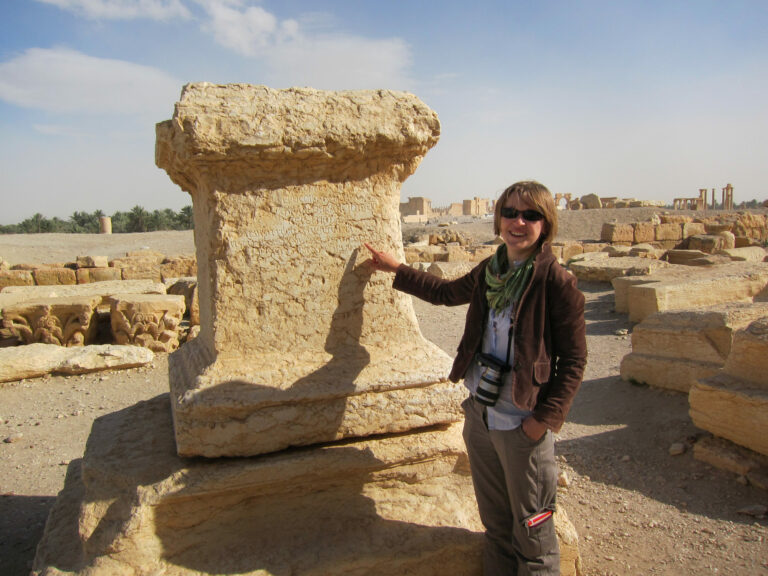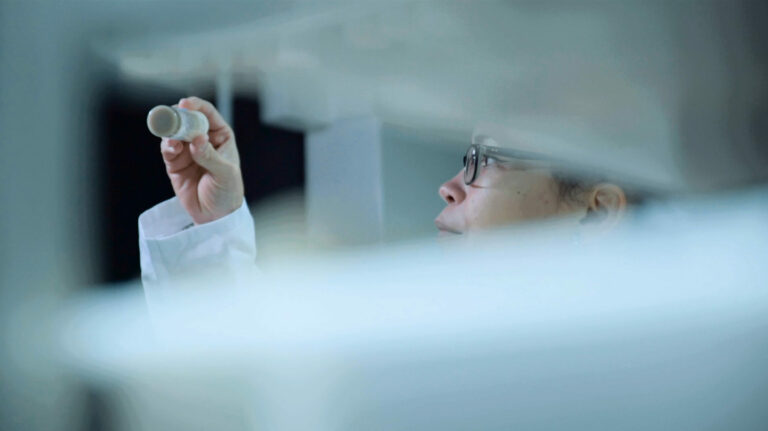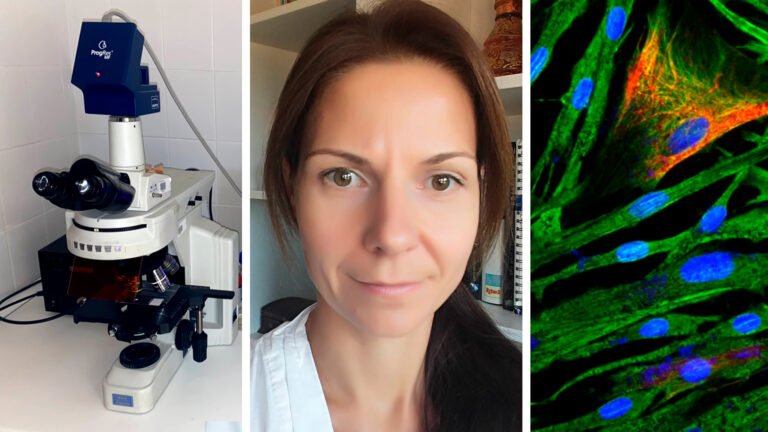Come and meet our fellows!
Who is who and who does what?
Biochemistry, Earth Sciences, German Studies, History, Biology, Medicine, English Studies, Law, Philosophy, Mathematics, Theology and, and, and …….at the University of Münster there are very many scientific fields – and researchers from just as many countries contribute to their advancing. What is true on a large scale is often true on a small scale: No wonder that our WiRe-Fellows Anna, Angélique, Chiara, Maria, Giulia, and Rehana come from different countries and conduct research in very different fields. Can you guess who is from which country? And who does research in which field? And can you guess where our fellows last conducted research before coming to Münster? We asked our ladies for some hints on these questions to help you:
Dr. Lamaze alias Angélique
Let’s see what Angélique associates with the place where she grew up: “It’s easy. I would say: carnival, rocket, giant turtle (luth turtle).” All right. Do you have a clue? It might be easier to guess where she currently lives: “Pubs, parks, and marmite” are typical for the country, according to Angélique. So far so good. Now let’s see which repetitive activity is part of her research:

“Every morning I’m looking for virgins …”
says Dr. Angélique Lamaze.
“…then I decide on the crosses I can do. To monitor the locomotor activity I load them in glass tubes and place them in monitors. To look at neurons in the brain, I dissect brains under binoculars using tweezers. I also have to take care of my own stock as well as a part of the common stock”. Well, can you guess what living creature she is talking about? The fact that Angélique hears the sounds coming out of a radio in her work environment probably does not help much. But what about the other two devices that make noises: fridges and incubators. Everything clear now? Well, Angélique also mentioned that her research has to do with light, temperature environment and neuronal networks. Does it ring a bell?
Dr. Marotta alias Giulia

…. links her homeland to seaside landscapes, the Sistine Chapel and Vespa mopeds. The country she has been researching recently reminds her of “baseball, hot dogs and Thanksgiving turkey”. Quite easy to guess where she is from and where she last conducted research, isn’t it?
Now we come to the more difficult part…When asked about a repetitive activity that she has to do again and again in her everyday research life, Giulia couldn’t think of any. But she has discovered the following pattern:
“Very often I accidentally come across a source that I consider really irrelevant for my current research. Hence, I take no note about it. Then, weeks or months afterwards, as my project evolves, I remember about that source and I realize that it was really relevant for what I’m working on. But now in order to find it again I have to retrace all my research itinerary over the past few weeks or months.. Not easy at all to find one or two sentences that you read only once and while you were reading a million other sentences…”
Dr. Giulia Marotta
The noises in Giulia’s work environment might also give a clue: Giulia knows the sound of flipping pages, opening and closing of archive drawers too well! So, do you have any idea what Giulia’s field of research is? If not yet, these keywords that she associates with her research should certainly help: modernity, religion, narratives. Well, do you have an idea now?
Dr. Ferreira alias Maria

“Mate, gaucho and tango …”
… were the things that came to Maria’s mind when we asked about three things she associates with her home country. Well, she also has a food-focused memory of the country where she last went for a research stay: she remembers “tea, breakfast and … a queen”. That’s an easy one, isn’t it?
Asked about three things that characterize her research, Maria gave us terms that we couldn’t understand at all. Maybe you are better at seeing clues in them: “inoculate, autoclave, isolated”. We were slightly more familiar with the sounds of her working environment: the whistle of gas flowing, the click of keys typing, timer alarm, fume hoods and the sounds of refrigerators… Did you already get any idea what Maria’s research topic might be? Perhaps these keywords will help you further: “ubiquitous polysaccharides, aquatic environment, microorganisms, small pieces of plastic debris, non-biodegradable materials“. So?
Dr. Ferrario (yes, not “Ferrari”!!!) alias Chiara
….thinks that driving crazily and town names ending in “ate” and “ano” are rather characteristic for her home country. Visitors might also think it’s famous for “bathing in fountains”, she added. (To be honest: she told us many more things, but we found them all too obvious).

When we chatted about the country where Chiara did her PhD, we also had to pick the less obvious hints: It reminds Chiara of driving on the left side, L&P lemonade and Pohutukawas.
“Bathing in fountains is supposed to be very popular where I’m from.”
So far so good. Now it gets really complicated. Most of her weekly research life consists of reading and typing, Chiara told us. That seems to prove Chiara’s research field isn’t a science. But what do you make of this: Chiara describes her research project as having to do with cultural evolution. Which subject in the humanities could be concerned with cultural evolution? Well, let us add another clue: Chiara’s area of expertise is often associated with an ivory tower.

Dr. Stejskalová alias Anna
“Skiing, blueberries, family” …are the three things Anna associates most with her homeland. Her surname might give you another hint.
It’s time to give you some inside information: Three of our fellows did research in the same country before joining the University of Münster! But each of them connects different things to the country.

When Anna thinks of her last place of research, she thinks of “parks, international cuisine and cinema”. Do you guess the name of the country and who else of our fellows worked there?
Let’s move on to Anna’s research. It actually has a lot to do with women! You probably wouldn’t have had this association when told that the repetitive activity that’s part of Anna’s daily is growing cells in the lab! Three other hints about her research Anna gave us: plastic, supports growth, and different conditions. Can you make something of that? Well, the info that the sound Anna find’s most characteristic for her working environment – “chatting” – is probably not of much help when it comes to figuring out her research field!
Dr. Shrestha alias Rehana
Rehana is from the country with the highest mountain in the world. Well, that is a pretty easy hint! A less well known thing Rehana told us about her homeland is the fact that its flag is unique and the world’s only non-quadrilateral national flag!

As all our fellows, Rehana has conducted research in different countries: The country in which she worked before coming to Germany is “popular for cycles and cycling”, she let us know. (By the way, in Germany, Münster is famous for that!). Rehana also thought immediately of the “flat countryside and the fact, that half of it is below sea level” when talking about the place. If you still haven’t guessed which country we are talking of, just picture tulip fields!
Now let’s move to Rehana’s research. It actually has to do with smart technologies and structures, sensors, noises and air…and people. And its goal will probably help all of us. Any idea what Rehana does?
Now you’ve received a lot of different information about our WiRe-fellows and their exciting research. We are curious if you already got an idea about their scientific and non-scientific homeland! Next week we’ll solve the riddles!





